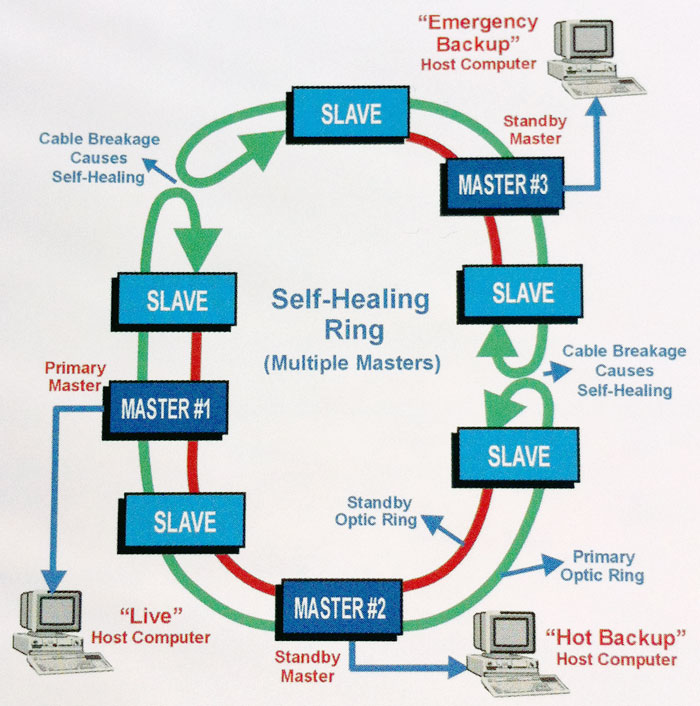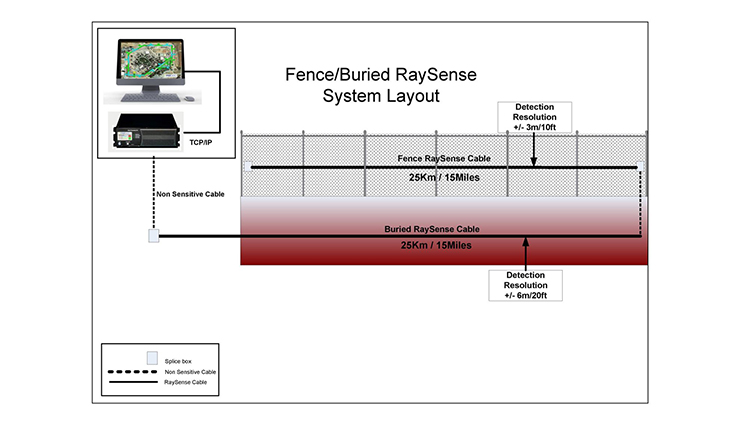Why a Fiber Security System Outperforms Traditional Security Systems
Why a Fiber Security System Outperforms Traditional Security Systems
Blog Article
Why Fiber Optic Security Equipments Are the Future of Security
The transition to fiber optic security systems marks a substantial innovation in the realm of defense, driven by their phenomenal data transmission capacities and durability to exterior interferences. As the landscape of protection progresses alongside arising modern technologies such as AI and IoT, the potential for fiber optics to boost and redefine protection frameworks comes to be increasingly obvious.
Advantages of Fiber Optic Systems
One of the primary advantages of fiber optic systems is their superior bandwidth capability, which assists in the transmission of huge quantities of data over cross countries without significant loss. This particular is specifically valuable for protection applications that need the constant tracking and transfer of high-definition video feeds, sensing unit data, and other crucial information. Fiber optics can suit the expanding needs of contemporary safety and security systems, making sure that information continues to be undamaged and reliable.
Furthermore, fiber optic cables are much less at risk to electromagnetic disturbance, which can be a significant problem in atmospheres with various digital devices. This resistance boosts the stability of the information being transferred, thereby decreasing the danger of data violations or system failures. Fiber optic systems are naturally a lot more secure than standard copper cables, as tapping right into a fiber optic line without detection is extremely difficult.
The longevity of fiber optic cable televisions additionally adds to their charm. They are immune to environmental aspects such as moisture and temperature level fluctuations, decreasing upkeep costs and boosting system longevity. Generally, these advantages placement fiber optic systems as a robust and effective choice for contemporary safety and security frameworks, guaranteeing reliable and safe information transmission.
Enhanced Data Transmission Rate

The ability to transmit huge quantities of data rapidly assists in the seamless combination of high-def video feeds and advanced analytics. Safety systems can now process and evaluate info in real-time, enhancing feedback times and situational recognition. In addition, fiber optic connections sustain longer transmission distances without degradation of signal quality, making them optimal for extensive safety networks.
The boosted rate of fiber optic systems not just improves the effectiveness of safety operations however also decreases latency. This is especially essential in important scenarios where prompt decision-making can stop safety violations or minimize possible hazards. As companies proceed to focus on security and effectiveness, the demand for fast and reputable information transmission will undoubtedly solidify fiber optic systems as a foundation of contemporary protection facilities.
Resistance to Disturbance
Fiber optic protection systems consistently show remarkable resistance to electro-magnetic disturbance, a critical advantage in settings vulnerable to electronic noise. Unlike traditional copper wires, which can be adversely impacted by magnetic fields, superhigh frequency interference, and various other forms of electrical disruption, fiber optic cords use light to transmit information. This integral residential property makes certain that the signals continue to be clear and unaltered, no matter bordering digital activity.
Making use of glass or plastic fibers in fiber optic technology produces a barrier versus disturbance, permitting reputable information transmission even look these up in tough situations such as commercial facilities, city areas with high digital traffic, or areas near radio towers. This characteristic considerably reduces the probability of signal degradation or loss, making fiber optic systems specifically appropriate for protection applications where stability and precision of data are vital.
Moreover, this resistance to interference improves the total performance and dependability of safety and security systems, guaranteeing that tracking and sharp systems function effortlessly. In a globe where safety and security is increasingly intimidated by innovative technologies, the durability of fiber optic systems sticks out as a crucial feature, reinforcing their condition as an essential component of contemporary safety framework.
Cost-Effectiveness With Time
Significant cost savings can be accomplished gradually with the application of hop over to these guys fiber optic protection systems. While the first investment may seem higher compared to standard copper-based systems, the lasting economic advantages emerge through minimized functional and maintenance prices (fiber security). Fiber optic cable televisions are naturally a lot more durable and much less vulnerable to ecological elements, which converts to reduce substitute and repair service expenses over their life expectancy
Moreover, fiber optic systems need less power to run, which further lowers power costs. Boosted data transmission capacities permit for less repeaters and amplifiers, lessening More hints tools financial investment and enhancing installation procedures. The scalability of these systems also adds to cost-effectiveness, as companies can increase their safety and security facilities without sustaining considerable added costs.
An additional element to take into consideration is the boosted performance in tracking and action capabilities that optical fiber offer. Improved real-time information transmission can result in quicker case reaction times, possibly mitigating losses and responsibilities connected with safety violations. Altogether, the long-lasting benefits of fiber optic security systems not just justify the preliminary expenditure but likewise position them as a monetarily prudent selection for companies seeking robust defense services.

Future Technologies in Safety
Progressing modern technologies are established to revolutionize security systems, incorporating artificial intelligence (AI) and equipment knowing to improve danger discovery and response abilities. These advancements will certainly allow safety systems to analyze huge amounts of information in real-time, identifying patterns and abnormalities that show possible hazards. This proactive technique will certainly make it possible for quicker decision-making and a lot more reliable incident responses.
In addition, the unification of the Web of Things (IoT) is leading the way for interconnected safety devices, providing extensive security and surveillance. Smart sensors can communicate information regarding environmental modifications, while automated informs can inform security employees right away of dubious tasks.
Moreover, the advancement of biometric innovations will certainly even more reinforce safety and security mechanisms. Face recognition, finger print scanning, and retina recognition are ending up being a lot more innovative, offering layers of authentication that are difficult to bypass.
Verdict
Finally, fiber optic protection systems stand for a significant advancement in security innovation, providing unparalleled data transmission rate, resistance to electro-magnetic interference, and long-term cost-effectiveness. As the need for innovative safety solutions remains to expand, the combination of optical fiber with arising innovations such as AI, IoT, and biometrics will even more improve safety and security infrastructures (fiber security). The combination of these advancements will guarantee a more safe and secure and responsive setting, solidifying optical fiber as a foundation of future security systems
Report this page